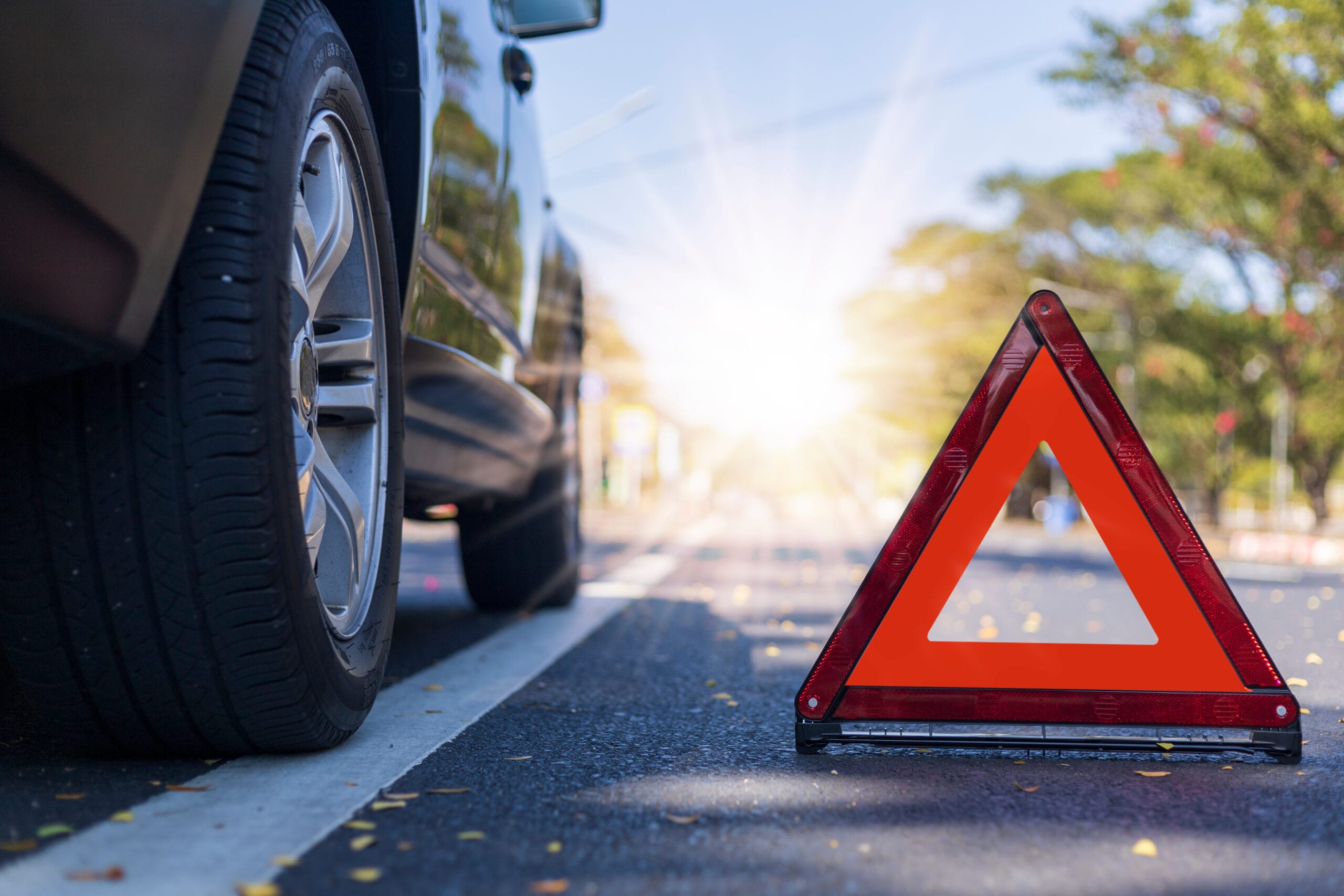ROADSIDE AWARENESS
New Braunfels, TX, March 20, 2024

While traveling to and from our jobs, we are often faced with issues resulting in the need to pull over on the side of the roadway. This can be due to a flat tire, a loose load that needs to be resecured, or worst-case scenario, a vehicular accident. Dealing with unforeseen vehicle issues can be frustrating and potentially dangerous. Keeping yourself out of harm’s way while determining the cause of the issue can be challenging.
Today let’s discuss three key points to consider during a Roadside Breakdown.
- PARK YOUR VEHICLE OUT OF HARM’S WAY.
- CHECK FOR ONCOMING TRAFFIC BEFORE EXITING THE VEHICLE.
- KNOW WHEN IT’S APPROPRIATE TO DEPLOY YOUR ROADSIDE KIT.
PARK YOUR VEHICLE OUT OF HARM’S WAY.
If you encounter a problem while driving, finding a safe place to stop and investigate is key to your safety. Your first choice should be to position your vehicle on the right side of the road, as far off the road as possible while remaining on level ground. If you are driving on an interstate or multiple-lane highway with medians, you may consider the left shoulder if getting to the opposite side poses a safety hazard. Avoid parking your vehicle on a corner or a road curve as doing so decreases other motorists’ ability to see you and react accordingly. If you cannot get your vehicle to a location away from traffic, or if you are uncertain about your safety notify law enforcement immediately.
CHECK FOR ONCOMING TRAFFIC BEFORE EXITING THE VEHICLE.
After you have stopped in the safest possible location, check all your mirrors as well as the surrounding area before exiting your vehicle. Watch for oncoming traffic traveling directly at you as well as those approaching from the rear. Knowing your surroundings before exiting your vehicle may prevent unnecessary risks caused by the environment, wildlife, or temporary changes in the roadway. Keep your headlights on and your four-way hazard lights activated anytime you’re outside of your vehicle, especially at night or during inclement weather.
KNOW WHEN IT’S APPROPRIATE TO DEPLOY YOUR ROADSIDE KIT.
In addition to the activation of four-way hazards and headlights, Commercial Regulated Vehicles are required to place additional warning devices such as flares or triangles. Warning devices must be placed within 10 minutes of stopping or when applicable safe to do so. Per the code of federal regulations 392.22 (3.6), One triangle will be placed at least 100 ft ahead of the vehicle. One triangle should be placed 10 ft behind the vehicle on the side of the oncoming traffic. The final triangle will be placed between 100 ft and 500 ft back down the road to provide ample warning to vehicles coming up on your truck. Placing warning devices including triangles properly can be challenging depending on where the vehicle is stopped such as hills, bends, or curvy roads. As pointed out in key points 1 and 2, it’s important to consider your surroundings and all the precautions required when stopped in areas other than a straightaway. It just may save a life!
Today, we touched on 3 areas of focus for dealing with roadside breakdowns, but many aspects could have also been discussed. Things like wearing a safety vest before exiting your vehicle, proper positioning when troubleshooting the problem, and the use of a spotter while moving around outside the vehicle are all critical to your safety. One last tidbit before we close for today is trying to take notice of things like landmarks, mile markers, or last exit numbers. These pieces of information can help speed up responses in the event you need to summon assistance.
If you would like more information on this topic or any other safety-related topic, please reach out to the Ontivity safety team at safety@ontivity.com, and we will get you taken care of.
